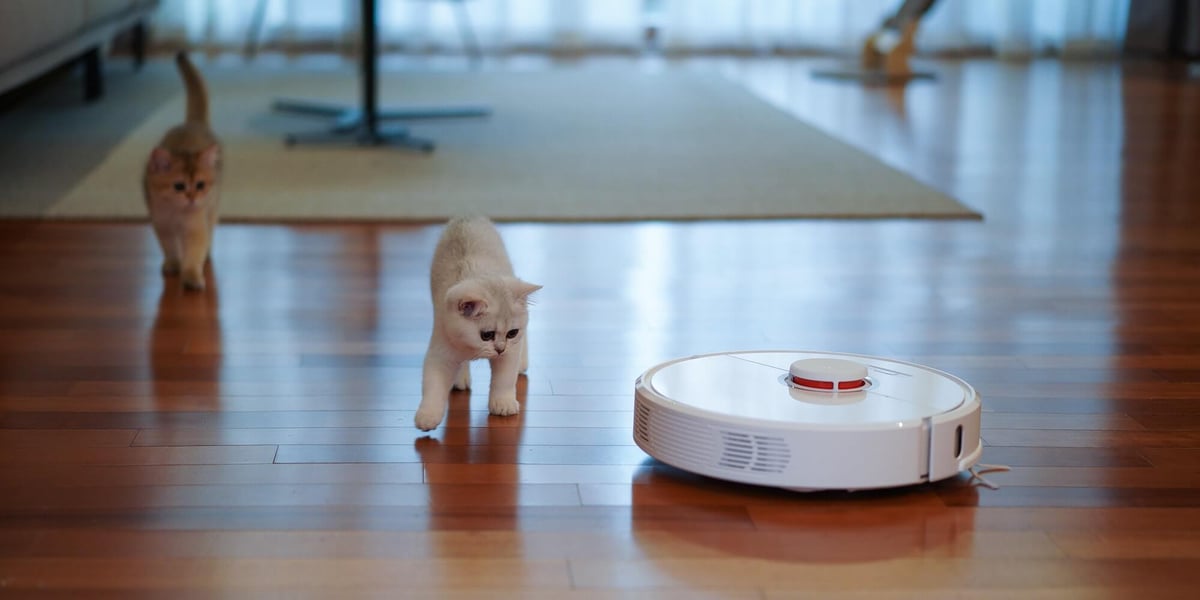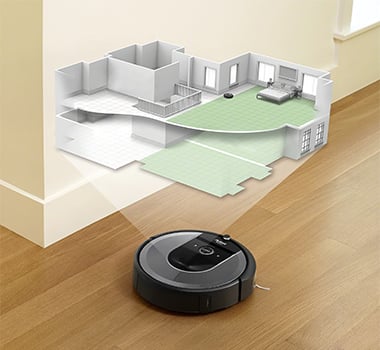Don't Get Sucked into Unrealistic Automation Expectations

Household chores are part of life. Unfortunately, some of us find them very frustrating and tiresome. However, robots such as iRobot Roomba® have changed cleaning our homes for good. According to Colin Angle, CEO of iRobot, automated vacuums are the "beachhead of practical robotics in the world today," an important step on the path to smarter homes.
Similarly, the robotic process automation (RPA) robot, which is a software robot (or “bot”), has changed how we do our daily office work. The appeal of robotic vacuum cleaners (RVCs) and robotic process automation (RPA) has reached the masses. Today, routine and mundane chores/tasks can be done with minimal human input. This blog post explores the similarities between the two technologies. I’m sharing my own journey from being an optimistic beginner, through disillusionment, to renewed success by reorienting expectations.
Frustrations
I find house cleaning, especially cleaning floors, to be frustrating because it is time consuming and (in my opinion) it requires no skill—it's just time spent. I'd rather interact with my family or friends instead of cleaning and vacuuming floors. I have been seeing RVCs for almost a decade.
After doing some research online and going through online reviews, I decided to buy an iRobot. I thought it'd be an excellent addition to my home and provide me with more time to do the things I enjoy the most.
An important step into the future
With great excitement and many expectations, I bought my first RVC: iRobot Roomba®. I was expecting to run it a few times manually before I trusted it to clean without my supervision. The first few times it was fun to watch the robot vacuum go around to clean the floor when I wanted. Asking iRobot to clean a specific area using the mobile app on Alexa was delightful. I could schedule a cleaning job whenever I wanted. The vacuum robot could create a house cleaning map on its own. It was cool.

Trouble in paradise
Very soon, my excitement and the usefulness of the robot started fading. Kids will always leave something on the floor, and an RVC gets easily stuck in the clutter. Before you can use it, you'll need to pick everything up off the floor. That includes toys, power cords, papers, and various other items that are too big for your vacuum. As a result, I lost interest in supervising this vacuum as if it was a misbehaving toddler. Since I didn't adapt to pick things up off the floor before it can vacuum, the robot started sitting idle in the corner. It went unused for over six months.
Going back to the old way
It appeared to be too much work and needed too much of an effort to keep the RVC working. Whenever something gets stuck, such as paper, the maintenance of the robot takes time, as you have to remove various parts of the vacuum robot to fix it. It was happening with almost every run. With us both being working parents and the lack of time to babysit the RVC, we went back to hiring household help to take over the cleaning.
Then the pandemic
Then the COVID pandemic forced everybody (adults and kids) to stay home. Kids attended school from home while we worked from home. It meant more frequent house cleaning was needed, and additional human help wasn’t available anymore. We decided to go back to look at taking advantage of the RVC again. This time, we were open to changing our behavior.
We made a few changes to the robot schedule and to our tasks. We scheduled a robot to run once a week to keep a manageable level if it stops vacuuming. Before the RVC ran each week, we made sure the floor was free from clutter and the robot vacuum's dust bin was empty.
Finally, it worked—renewed success by reorienting expectations
With those small changes, we kept our home cleaner and we felt a more positive energy. The robotic cleaner option finally worked in the end. Now the RVC and I are working side by side in perfect harmony. Except for when it turns itself on in the middle of a Zoom call or my favorite television show. No wonder most RVC manufacturers will tell you that a robotic vacuum is meant to supplement a standard, human-pushed vacuum cleaner, not replace it. That's when I realized there are significant parallels with RPA.
RPA and RVC save time
RPA and RVC are both convenient and save time. Now, using the RVC I can save at least one hour with each cleaning. It saves time, reduces costs for household help, and think about how good you feel looking at your clean floors. Once you set it up, the RVC will complete the job at the click of a button, leaving you to tackle more important tasks. RPA offers a similar benefit.
Similar to software robots, the cleaning robot focuses on getting repetitive manual work done. I scheduled the RVC to operate once a week to achieve optimal cleaning. RPA enables humans to focus on tasks that require more human intelligence. You can delegate some of your routine, tedious work tasks to a software robot, which gives you more time to do the creative, problem-solving work that you love (and robots aren’t as great at). You can think of your own software robot as a kind of digital assistant.
Get the e-book: Why a Robot Will be the Best Thing to Happen to Your Career
Small changes are all you need
To succeed with RPA or RVC, you need to make a slight change in the way you work. For example, I set up a new operating model for the home RVC robot. The RVC is scheduled to operate once a week. I free the floor from clutter before the robot starts working and I clean the robot's dust bin once a week. Now RVC and I are working side by side in perfect harmony. My wife and I had to make minor changes in our cleaning process to make this happen. It's very similar to implementing RPA at scale. An automation operating model includes strategy, vision, creating a center of excellence (CoE), building robots at scale, and supporting their production in a consistent manner.
Is artificial intelligence (AI) used in RPA and RVC?
Our homes and our workplaces are getting smarter every day. Yet, at work and at home, we keep repeating the same tasks every day—manipulating data in Microsoft Excel, cleaning the house, and various other things. These repetitive and mundane (but necessary) tasks leave many opportunities for AI to step in and help.
On the RPA side, AI and machine learning (ML) add cognitive power including reading various types of documents, images, and unstructured data. On the RVC side, AI/ML create an intelligent navigation system to map its surroundings. RVCs employ an AI algorithm to cover the maximum area.
Conclusion
Having a RVC in your home is conceptually similar to running a robot on your desktop or laptop to automate manual digital tasks. Overall, RPA robots can imitate many human actions, which is very powerful. They're here to stay.
The RVC global market has shown stellar growth. The adoption of RVC over traditional vacuums is expected to increase due to various benefits such as cost effectiveness regarding human resources.
To make RPA or RVC adoption successful, you need to be open to small changes in your own behavior. For RPA success, define and adopt an automation operating model that helps to see the results. The right operating model allows for expansion beyond the current tasks and processes.
Ready to find out more about setting up the right operating model for your organization? I recommend reading Benefits of an Automation Operating Model (Part 1).
If you’re new to RPA, I recommend reading What is RPA? next.

Consulting Director, UiPath
Get articles from automation experts in your inbox
SubscribeGet articles from automation experts in your inbox
Sign up today and we'll email you the newest articles every week.
Thank you for subscribing!
Thank you for subscribing! Each week, we'll send the best automation blog posts straight to your inbox.



